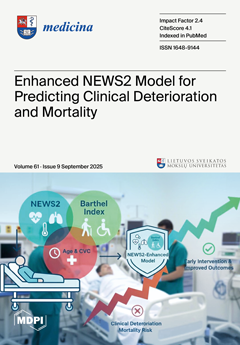Background and Objectives: This systematic review and meta-analysis aimed to analyze the available body of published peer-reviewed randomized controlled trials (RCTs) on the effects of concurrent training (CT) on biomarkers, morphological variables, and physical performance in people with sarcopenic obesity.
Materials and Methods: Using six databases—PubMed, Medline, CINAHL Complete, Scopus, Cochrane Library, and Web of Science—a comprehensive literature search was conducted through July 2025. The GRADE, TESTEX, Rob 2, and PRISMA tools were used to assess the methodological quality and certainty. The protocol was registered in PROSPERO (CRD420251052935).
Results: Out of 669 records, 8 RCTs with a total of 453 participants (68.9 ± 11.1 years) were included. Fifteen overall and three subgroup meta-analyses revealed significant improvements (
p < 0.05) in insulin-like growth factor-1 (ES = 1.01, 95% CI = 0.26 to 1.75,
p = 0.008) and leptin (ES = 2.54, 95% CI = 0.07 to 5.01,
p = 0.04) levels; significant decreases (
p < 0.05) in body mass index (ES = 0.54, 95% CI = 0.12 to 0.97,
p = 0.01), waist circumference (ES = 1.80, 95% CI = 0.32 to 2.12,
p = 0.008), and body fat (BF, ES = 1.31, 95% CI = 0.53 to 2.09,
p = 0.001); and significantly increased (
p < 0.05) appendicular skeletal muscle mass/weight (ES = 0.42, 95% CI = 0.14 to 0.71,
p = 0.004), walking speed (ES = 1.80, 95% CI = 1.05 to 2.55,
p = 0.000), and knee extension (ES = 0.76, 95% CI = 0.09 to 1.42,
p = 0.02). However, no significant improvements (
p > 0.05) were observed in IL-6, CRP, total cholesterol, triglycerides, trunk fat, BF mass, and MIHS. On the other hand, an important result in the meta-regression revealed that weeks of training can predict decreases in BF (R
2 = 0.32;
p = 0.02).
Conclusions: CT has been associated with significant clinical improvements in biomarkers related to increased muscle mass and decreased BF percentage.
Full article






